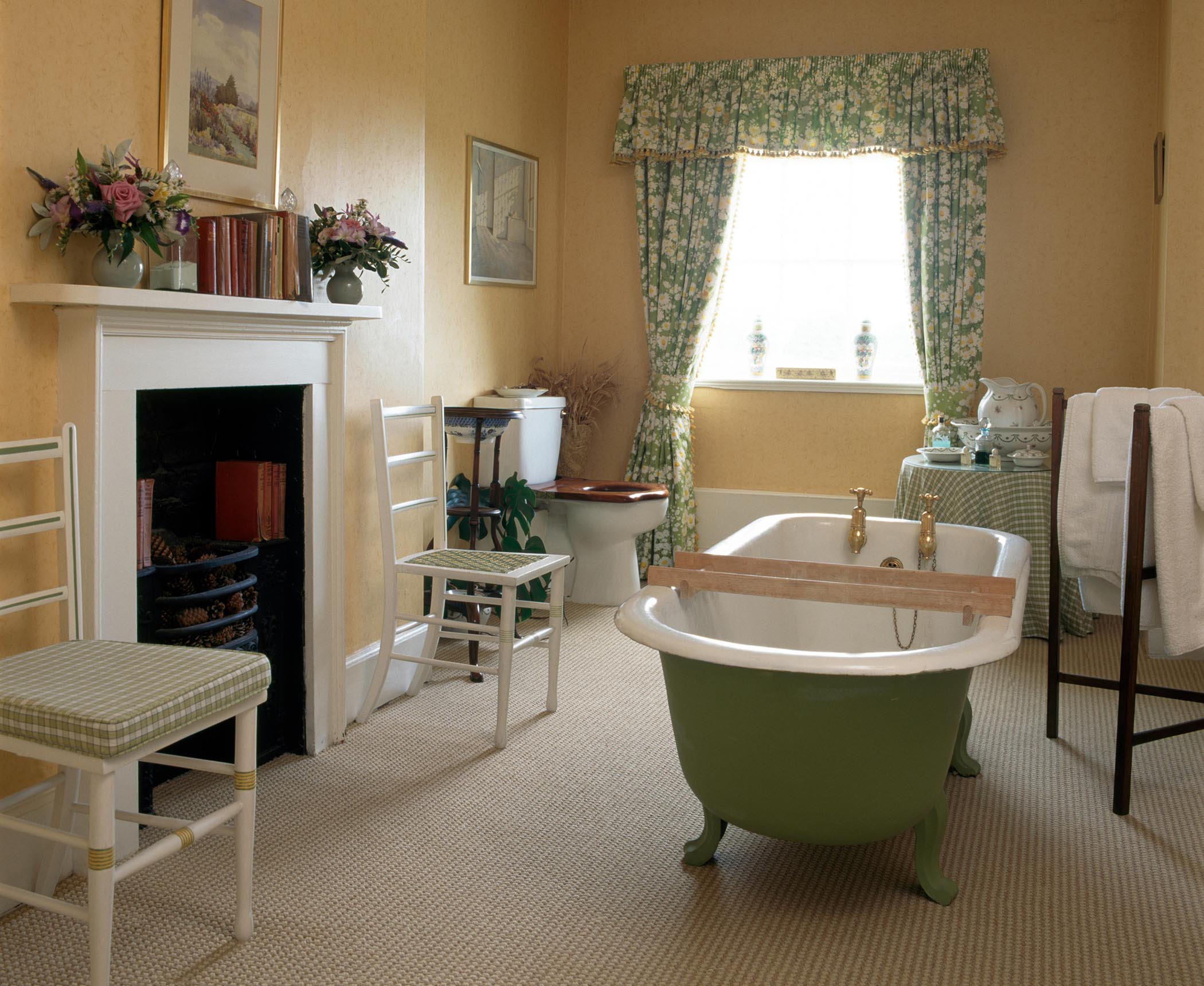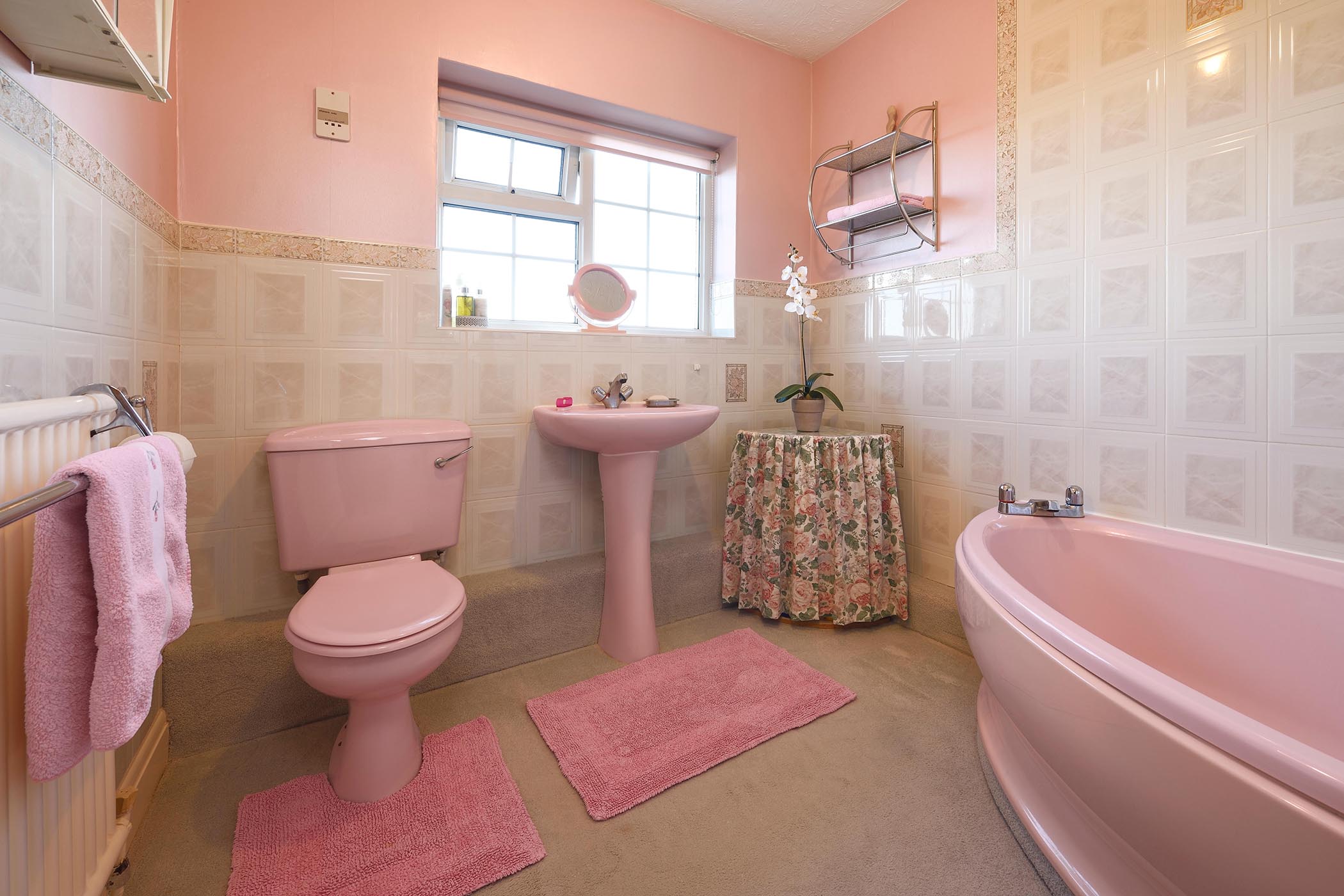A squelch underfoot, a whiff of must and a decade of dead skin and body hair knitted into the shagpile. There was a time when only Fungus the Bogeyman would have objected to ripping up the waterlogged Wilton for wipeable tiles and laminate.
Now, just when you thought it was safe to walk barefoot to the tub, the bathroom carpet is in danger of making a comeback. “Done sympathetically and practically, they can feel oh-so cosy and charming”, insists a recent article in Homes & Gardens. Louise Jones, founder of the interior design company Fairfax Jones, told the magazine: “I love carpets in the bathroom! Soft underfoot and warm during chilly winter months… as long as you use bath mats and open the windows from time to time, you’re fine.”
The London designer Rhonda Drakeford is similarly sympathetic. “There’s a real thing with acoustics,” she says. “With floorboards and tiles, you get a lot of echo. Carpets soften the sounds and that’s a big part of feeling calmer.” Carpets in bathrooms first took off in the 1950s, according to Louis Platman, a curator at the Museum of the Home in London. Up until then, most British homes didn’t have an indoor bathroom. “For people who had grown up using an outhouse, why would they want a cold, tiled bathroom floor? They’d want to live in as much comfort as they could afford,” he says. Around this time, artificial textiles, such as nylon, became more common, making carpets cheaper.

Pale green roll top bath in country bathroom with green floral curtains and a cream carpet
“Carpeted bathrooms were heavily advertised in 70s and early 80s,” says Platman, who even spotted a bathtub with an entirely carpeted exterior in a contemporary magazine. “Now the idea disgusts me. I think a lot of us grew up with ones that had rotted away for decades, and that’s probably why we’ve now turned against them.”
Yet Platman is in danger of busting the zeitgeist. Many of the homes that interior designer Joanna Plant works on are large country piles and there, she says, bathroom carpet is de rigueur. “When they’re large [bathrooms], there’s nothing more off-putting than a huge expanse of chilly tiles,” she says. Despite the hygiene heebie-jeebies, there are further advantages.
‘Even pink and avocado suites are on trend’
“Heating bills are on the rise, so people are going to want more carpets,” Platman concedes, adding that many of us are “spending a lot more time in our homes than we ever dreamed”, and this has led to an increased focus on “comfort and cosiness”.
Interior designers broadly agree we’re witnessing a shift away from the Scandinavian-inspired clean aesthetic towards the colourful and maximalist – even pink and avocado suites are on trend. “I quite often get clients saying they don’t want any white in the bathroom, because they want to relax and white can be quite stark,” says Drakeford. For those who don’t yet have the stomach for regular carpet, waterproof sisal is growing in popularity.
Designer Bridie Hall, the co-founder of Pentreath & Hall, one of London’s top furniture and interiors shops, grew up in New Zealand, and says the first time she saw a carpeted bathroom was in 2001 when she moved to England. Her first emotion? “Confusion.” But she has since come to love it. “As a woman living on my own, it’s very agreeable.” Hall also points out that modern domestic carpet-shampoo machines are affordable and effective.
Norwegian designer Bjarte Sandal laughs: “My very strict mother... told me to sit down to pee,” he says. “She’d grown up with carpets in the toilet and learned how gross it is.”
And this is, of course, the “elephant in the room”, as Plant puts it. “It’s more appropriate for a woman’s bathroom… for obvious reasons.”
Photograph by Andrew Paterson/Alamy
